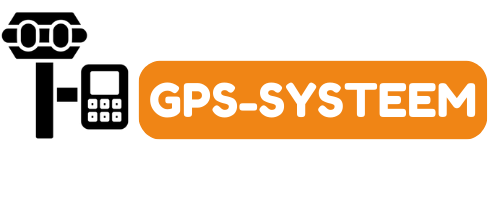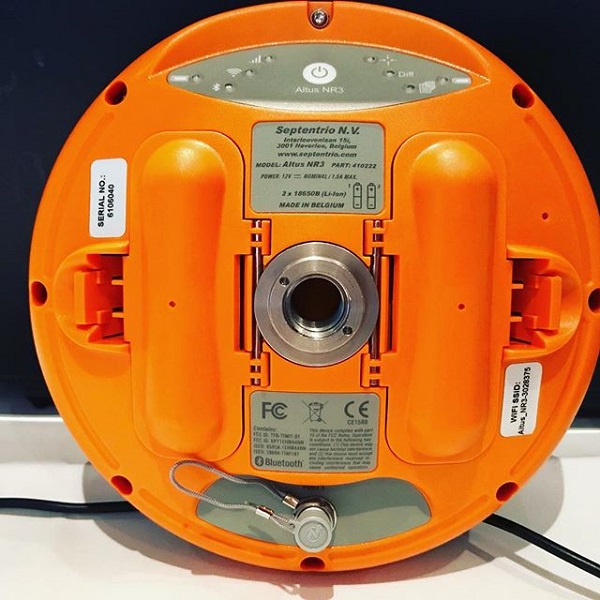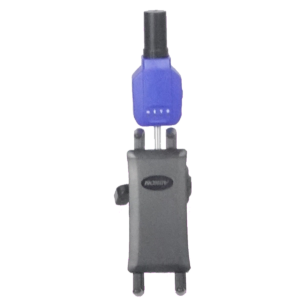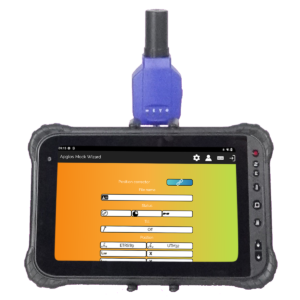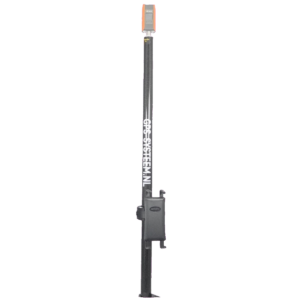The Altus NR3 from Septentrio is one of the many GPS receivers on the market. Perhaps this GPS receiver is less known than the receivers from well-known brands such as Topcon, Leica and Trimble. But the Altus NR3 is one of the highest quality GPS receivers on the market.
The Altus NR3 from Septentrio is a GPS receiver that is ideal for surveying. This GPS receiver is also a good solution for GIS applications and measurements on the water. This receiver has several major advantages. One of them is AIM+. AIM+ ensures that the receiver is resistant to jamming of satellite signals, so that the Altus NR3 can still accurately determine a position when the satellite signals are jammed. In addition, this GPS receiver has APME+. This allows the receiver to still determine an accurate position when satellite signals are reflected from smooth surfaces. The Altus NR3 stands for accuracy. And that’s what you want when surveying with GPS.
To clarify everything about this topic, we will answer the following questions in this article:
- What is an Altus NR3?
- What are the advantages of the Altus NR3?
- Which variants of the Altus NR3 are there?
- What are the specifications of the Altus NR3?
- Where can you buy an Altus NR3?
- Where can you find the manual for the Altus NR3?
- What is the best software for surveying with the Altus NR3?
Altus NR3: the solution
You may not be able to read this entire article. Therefore, there is another opportunity to learn more about Altus NR3.
You can try a GPS measuring system via this website. Please look directly at this page . Please indicate in the comments when ordering that you would like to try an Altus NR3.
You can request a demonstration of one of our GPS measuring systems on the same page. During this demonstration you can ask specific questions about Altus NR3 and of course also about other topics related to GPS surveying.
If you do not have time for a demonstration or if you just want to try the best software for this GPS receiver, that is possible. Apglos Survey Wizard is the easiest software to perform GPS measurements with this GPS receiver or any other GPS receiver. You can download it for free from the Google Play Store .
The Apglos Survey Wizard surveying app has full functionality with the GPS of your Android device. So you can fully test this app and it is free.
Of course, the accuracy of our GPS receivers, and especially the Altus NR3, is better than that of standard Android devices. So if you want to test with an accurate system, take a look at this page .
What is an Altus NR3?
The Altus NR3 is a GPS receiver. It collects satellite signals with the integrated antenna. These may be satellite signals from the GPS, GLONASS, GALILEO and BEIDOU satellite constellations. And this GPS receiver determines the exact position based on the satellite signals.
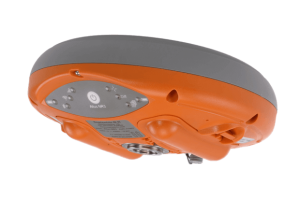
This GPS receiver is made in Belgium. The Belgian company Septentrio developed and continues to build this GPS receiver. Since it is a Belgian company, it is extra nice that they have given it a Dutch touch: orange.
What are the advantages of the Altus NR3?
As you may know, there are many different GPS receivers. And you’re probably wondering why the Altus NR3 is so special. In any case, that’s a very good question.
There are indeed many GPS receivers. But this GPS receiver has some very interesting features. This GPS receiver was developed by intelligent people who understand what they are doing. And this is also evident from the characteristics below. These features give the Altus NR3 a major advantage over other GPS receivers.
Of course it is an advantage that this GPS receiver is lightweight, but there are also technical features / advantages.
Jamming resistance: AIM+
The position is determined by each GPS receiver based on satellite signals. The satellite signals fly from the satellite through the atmosphere and air to the GPS receiver. During the time that the signal is on its way from the satellite to the GPS receiver, various things can happen to the signal.
One of them is jamming. Jamming involves blocking the satellite signals either intentionally or accidentally. This causes many GPS receivers to become temporarily upset and cannot determine the exact position.
However, the Altus NR3 has a system in the GPS receiver that allows it to suppress the interference of these blockages. As a result, this GPS receiver can often still determine an exact position when there is intentional or unintentional jamming of GPS signals.
Vibration resistance: LOCK+
When you are surveying, the GPS receiver may be shaken. This mainly happens on rough terrain, where you have to avoid branches, trees or other things.
The shocks or vibrations can make it difficult to track the satellite signals by the GPS receiver. It is easier for a GPS receiver to determine the exact position if it continuously receives signals from the same satellites.
The developers of Septentrio have therefore built LOCK+ into the Altus NR3. Using LOCK+ makes tracking satellites easier. This means that this GPS receiver loses its exact position less quickly than other GPS receivers. This means you can work faster with this GPS receiver.
That is of course what you want when you are surveying.
Resistance to atmospheric influences: IONO+
The satellite signals travel from the satellite to the GPS receiver through the atmosphere. The atmosphere is not always the same. That is one of the main reasons that it is difficult to determine the exact position with GPS.
The developers of Septentrio have looked at the atmospheric influence on the GPS signals. Based on that study, they developed IONO+. IONO+ is the most advanced protection against atmospheric disturbances.
This is certainly important for a GPS receiver where atmospheric influences are significant. But it is also an advantage in the Netherlands.
The better the protection against atmospheric influences, the more accurately you can measure with GPS. And ultimately when you measure, you want it to be accurate.
Resistance to reflection of satellite signals: APME+
And besides the atmosphere and possible blocked satellite signals, there is something else that the Altus NR3 takes into account. The satellite signals can bounce off metal objects or mirror walls.
In this way, two signals from one satellite could arrive at the GPS receiver due to this reflection. One is the real signal and the other is a reflection of it.
The data from both signals are often not the same. Due to reflection, the path from the satellite to the GPS receiver is often longer than the direct signal. And this also means it takes longer to travel. The GPS receiver receives the same message from the same satellite but at a different time.
It may also be that the GPS receiver only receives the reflected satellite signal. This satellite signal is incorrect.
You can probably understand that this makes it difficult for GPS receivers to determine the exact position of large metal objects or mirror walls.
However, the Altus NR3 has APME+ built in. APME+ ensures that the direct and reflected satellite signals are separated from each other. As a result, this GPS receiver only uses direct signals and a better and more accurate position determination can be guaranteed.
Integrity mechanism: RAIM+
In addition to all the above techniques, the Altus NR3 has another technology. This is RAIM+. RAIM+ controls all mechanisms of the GPS receiver to determine an exact position from the satellite signals.
If errors are found during this check, they will be corrected by RAIM+.
With the RAIM+, Septentrio wants to ensure that the position is determined as accurately as possible by this GPS receiver. And that is a good goal.
Surveying is all about accurate position determination.
Which variants of the Altus NR3 are there?
This GPS receiver has many advantages. But like many manufacturers, Septentrio also offers a number of variants of the Altus NR3. This GPS receiver has several variants. Fortunately, distinguishing between the different variants of this GPS receiver is not difficult.
The distinction only has to do with the satellite constellations that the GPS receiver receives and then uses to determine the exact position.
There are currently four major satellite constellations. The oldest and most famous is GPS. These are the American satellites. After GPS came GLONASS. These are the satellites of Russia. And then came two more. These are GALILEO of Europe and BEIDOU of China.
There are four variants of the Altus NR3. The first is the basic variant. And it can only receive GPS and GLONASS.
For the other three variants, the satellite constellations that can be received can be expanded. There is the variant that receives satellite signals from GPS, GLONASS and GALILEO. Of course there is also the variant that can receive GPS, GLONASS and BEIDOU satellite signals. And finally, there is a variant that can receive the satellite signals from all four satellite constellations.
Ultimately, the basic variant works well. But the more satellite constellations the GPS receiver can receive, the more often the GPS receiver can determine an accurate position.
What are the specifications of the Altus NR3?
GPS receivers have many specifications. The Altus NR3 also has that.
An important specification concerns which satellites the GPS receiver can receive. For this I have already mentioned about the different satellite constellations GPS, GLONASS, GALILEO and BEIDOU.
But each satellite constellation also has its own groups. For example, GPS has the groups L1, L2 and L5. The Altus NR3 can receive the satellite signals from all these groups. This also applies to groups L1, L2 and L3 of GLONASS.
The variants that can receive GALILEO can receive groups E1, E5a, E5b and AltBoc.
And for the variants that receive BEIDOU, they can receive groups B1 and B2.
As is known, if a GPS receiver can receive more groups of satellite signals, it becomes easier to survey anywhere.
Ultimately, the type of satellite signals the Altus NR3 can receive is just one specification. There are of course many more specifications for this GPS receiver. All these specifications have been collected by Septentrio in a clear specification sheet.
You can download that specification sheet here .
Where can you buy an Altus NR3?
This is actually a very easy question. Apglos BV, of which GPS-systeem.nl is part, is an official dealer of Septentrio. This of course means that you can buy the Altus NR3 GPS receiver from us.
If you are interested in this receiver, please contact us.
[contact-form-7 id=”913″ title=”Contact”]
You may find it strange that there is no GPS measuring system with an Altus NR3 on this website. There are a number of reasons for this.
First of all, the price of the Altus NR3 is higher than the GPS receiver, which we have on our buy and try page . The price is between €7000 and €9000 for the GPS receiver alone.
The explanation that there is a large price difference between the Emlid Reach RS2 and the Altus NR3 is quite simple. Both basically do the same thing. But of course there are differences. Septentrio has technically developed this GPS receiver enormously. You can also read this in the advantages of the Altus NR3 that I mentioned.
In addition, there are different variants of this GPS receiver. There is only one variant for the Emlid Reach RS2.
Both reasons ensure that if you are interested, we will be happy to give you personal advice. We want to ensure that when you choose a high-quality GPS receiver, you choose the right one that you can use. And so you can measure how you want.
It is therefore wise to contact us if you are interested in an Altus NR3 from Septentrio.
Where can you find the manual for the Altus NR3?
The Altus NR3 is easy to operate. It only has one button and that is the on and off button. In addition, the front of this GPS receiver has eight LEDs. Icons indicate what they stand for.
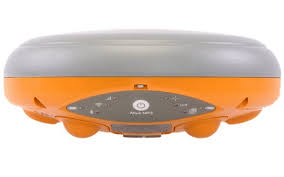
There is of course a manual for the Altus NR3. There’s even a quick start sheet. But before I point out the links to the manual and the quick start sheet, I want to say one very important thing about this GPS receiver.
This is about staking. It is very important not to hold the on/off button for too long when switching off. When the LEDs light up, it is necessary to remove your finger from this button.
If you do not do this, the Altus NR3 will reset itself. And then the GPS receiver will use the factory settings the first time you turn on the receiver. These are often not the settings you need for surveying.
But knowing that, here are the links:
What is the best software for surveying with the Altus NR3?
You can’t do much with just a GPS receiver. This also applies to the Altus NR3. To survey you also need surveying software. But there are several surveying software packages.
For everyone I recommend using Apglos Survey Wizard. This is a simple surveying app that can be used by anyone, without requiring much study. Apglos Survey Wizard is intuitive.
And this surveying app works great with the Altus NR3. Many people use this combination without any problems. You can also download this app yourself from the Google Play Store.
There is another fun fact regarding this combination. The predecessor of the Altus NR3 is the Altus NR2. And the Altus NR2 is the first GPS receiver that Apglos Survey Wizard, or its predecessor Apglos HST, has connected to.
Apglos Survey Wizard and the Altus NR3 therefore have a good relationship with each other.
Final conclusion about Altus NR3
This was a whole article about Altus NR3. There is a lot to report on this topic of GPS surveying. We hope that you have learned at least a few things from it and that you can benefit from them.
However, everything written in this article is theory. If you want to put this theory into practice, you can.
You can try a GPS measuring system with an Altus NR3 via this website . Please indicate when ordering that you would like to try an Altus NR3 from Septentrio. If you do that, you can immediately put into practice what you learned by reading this article. And you can see whether working with this GPS receiver from Septentrio is something for you.
Of course, when you try or buy one of our GPS measuring systems, you will receive a short and clear explanation, so that you can get started right away.
If you would like a demonstration first, you can also request one via the pages mentioned above. During a demonstration or a brief explanation you can also ask specific questions about Altus NR3.
